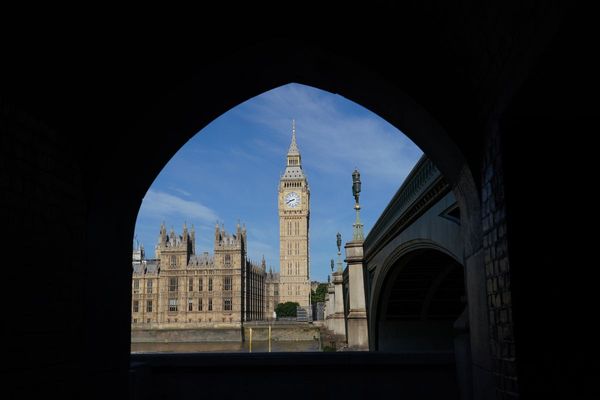
Anthology productions are by nature fickle beasts, requiring dramatic vignettes that are narratively separate but connected in tone or atmosphere. This challenge is well realised in two of my favourite Australian anthology productions: Tracey Moffatt’s spooky triptych BeDevil (the first feature directed by an Aboriginal Australian woman) and the long and eclectic Tim Winton adaptation The Turning. It’s also well realised in SBS’s Night Bloomers, a showcase of five short horror films created and directed by Andrew Undi Lee, with each mini-episode exploring different aspects of the Korean-Australian immigration experience.
In premise and execution, this is the sort of production that tends to be described as “elevated horror”, an exclusionary term emerging from that timeless debate surrounding “high” and “low” art. The point of such a description would be to distinguish this experience from the more carnivalesque, collywobbles-creating kind, its messages observable through a thick layer of symbolism, some relatively clear and others likely to go undetected by many – partly because they’re steeped in Korean culture and partly because the scripting can be intentionally oblique, strewn with moments designed not to shock but to make viewers think “hmm … ”
All sorts of strange goings-on are scattered across its roughly one-hour cumulative runtime, from the appearance of a rotund blue-skinned goblin to rituals for the dead and various creepy apparitions. Between each segment there’s vision of a dancer in a traditional Korean hanbok, juxtaposed against a black background, performing (to quote the director’s statement) “a cleansing dance to expel the evil in the world by untying the knots between the living and dead”. This is a classy anchoring element, imbuing the film with mystery and returning viewers to a meditative state of mind, a kind of cognitive and emotional reset.
But each vignette was over too quickly and left me wanting more. This speaks both to Lee’s impressive ability to quickly immerse viewers in interesting scenarios and also Night Bloomers’ incomplete feel.

The first episode, Striking Hair Pin, follows Ra Chapman’s Sophie, a woman who has moved from rural Australia to Sydney’s city centre and is trying to reconnect with her Korean heritage. Her attempts are clumsy: she tries to prepare Korean meals for white friends who know more about cooking them than she does.
Sophie then visits a Korean grocery store and is drawn to one of its employees. All this prosaic plotting begging the question: where’s this going? And: what kind of horror awaits? No spoilers, suffice to say Chapman’s impressively calibrated performance captures a swelling desperation that eventually finds a release, not necessarily in positive ways.
In Passing On, 65-year-old Su Min (Young Shin Lee) and her daughter Hannah (Helen Kim) perform a death ritual on the first anniversary of the death of Su Min’s mother, fearing that if they don’t her spirit will “go mad and be lost forever”. Which is all well and good, buuuttttt, is that a relative of the freaky ghoul from The Ring slithering down the hallway in the background?

Friend or Foe summons the aforementioned goblin, who appears before a hoarder and has a dangerously ravenous appetite. In The Second Coming it’s revealed, for reasons I won’t disclose, that two ambulance workers have chosen their profession for very particular reasons; to me this vignette felt a bit forced and gimmicky. The remaining episode, Jacking Souls, involves an ultra-stern father, a rebellious teenager and a demonic creature.
Lee and the screenwriters (Lee, Ra Chapman, Suzanne Soo Hyun Kim and Jacob Holmes-Brown) keep the dramatic scenarios relatively simple but tease them out well, never using horror elements for quick and dirty scares. The payoffs aren’t always there and the endings can be abrupt; on the flipside, none of the episodes overstay their welcome or bite off more than they can chew.
• Night Bloomers screens at 9.30pm on 28 October on SBS Viceland and SBS On Demand







